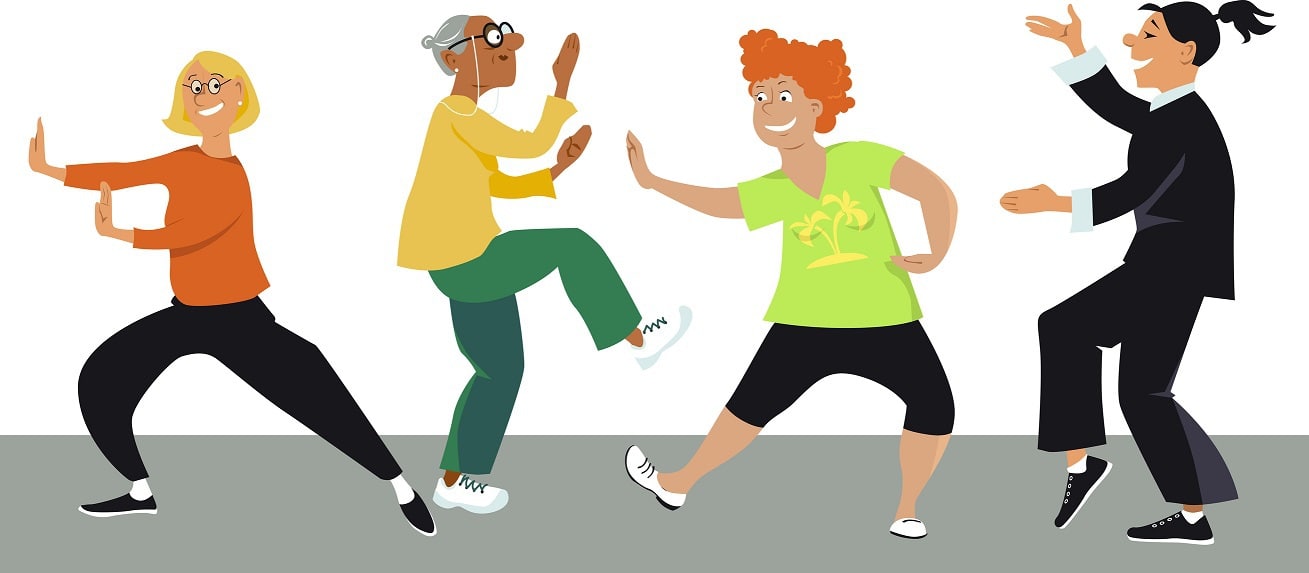
History of White Crane Tai Chi
Not an awful lot is known about the origins of the White Crane form, known as ‘Shuang Yang Bai He Rou Ruan Quan’ (Frost & Sun White Crane Soft and Gentle Art). It’s commonly known as Shuang Yang, meaning Frost and Sun.
Frost and Sun are a direct correlation to Yin and Yang, which are of course fundamental to Chinese thought – whether that is in cosmology, philosophy, Feng Shui, cookery… almost anything you can think of, including Tai Chi.
I learnt the form from Russell Suthern of White Crane Martial Arts in Brighton, UK. His instructor was Dennis Ngo of Fujian White Crane in London, who in turn learnt it from Master Ang of Namyang, based in Singapore. Master Ang’s instructor was Master Miao Sian Meng of the Chuan Chew Shaolin Temple in southern China.
Other than that, you won’t find much more information about the origins of Shuang Yang.
What we do know is that compared to many styles of tai chi, it is quite rare. There are more schools that teach it now but – as far as I know – most of them seem to be pocketed around the south east of the UK, with a few dotted around other parts of England and Scotland. I would imagine that it is still taught in Singapore and there is a school in Thailand teaching it also. (All of this information could well have changed in the post-Covid world though, so don’t quote me on any of it!)
Chen, Yang, and Other Tai Chi Styles
The way I was taught martial arts was to think that the White Crane style was the pinnacle of martial arts and should be revered above all else. Quite frankly that is nonsense. There are many fantastic styles of tai chi, some from a common root, others not. Some can trace their lineage back hundreds of years, others not. Some martial arts styles originated from families (Yang), others geographical locations (Chen), some temples (Shaolin), most are Taoist, others are Buddhist (Shuang Yang).
What does all this mean to you? Not a lot really, it’s just quite interesting to know! As a tai chi enthusiast you should at least know a little about your style, and how it contrasts with others.
I’m often asked which style of tai chi is best. I find that too much time and energy is wasted thinking, talking, arguing, or even fighting about questions such as these. I have two standard answers to such a question: 1. It depends. 2. The one that you practice regularly.
Personally I practice and teach Shuang Yang, Chen, and Yang. Which is best? They all are… the most important thing is practice!
Principles and Benefits of Tai Chi
The important thing about tai chi is the relaxation, improving your balance, flexibility and strength, calming your mind, learning to root your stance, developing bone density, increasing the strength and elasticity in your tendons and ligaments, keeping your joints healthy…. It’s not so important whether you’re doing Yang, Chen, White Crane, or any other style… They should all adhere to principles which improve your general health and wellbeing, as well as teach you useful self defense skills (if you’re learning it as a martial art).
How to Learn Tai Chi
Your learning in tai chi never stops. There is always more to learn, or your knowledge of what you have learnt before develops and deepens.
Of course having an instructor is great but for many people it’s just not possible, due to time/geography/other commitments. In this case, using an app or a website is of great benefit and with some determination you can learn tai chi and benefit as much as you would from going to a class. (Personally, I’m also happy to check people’s forms and offer feedback if they send me videos).
We offer two ways to learn online, you can use our website: www.whitecraneacademy.com or our app: www.taichiapp.com – which one you use completely depends on your preference! Our app is now available on Smart TV’s, phones, and tablets.


0 responses on "White Crane, Tai Chi, and Learning Online."